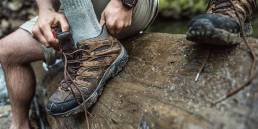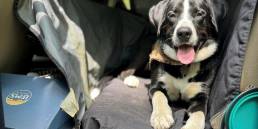Hiking 48 peaks in 13 weeks requires motivation and single-minded determination—or a partner with those qualities. Decent weather helps, too.
I didn’t tap into that drive until my partner John dropped the “B” word.
Back in December, I had about 20 peaks to climb to claim a Winter 48 (hiking all of New Hampshire’s highest mountains in winter, over any period of time). But John said, “A Winter 48 is great, but a single season 48 would be badass. Not that many people have done it.” Call me out like that and of course I’m going to take the bait and make the commitment to hike every weekend from mid-December to mid-March. I couldn’t let anyone question my badassery.
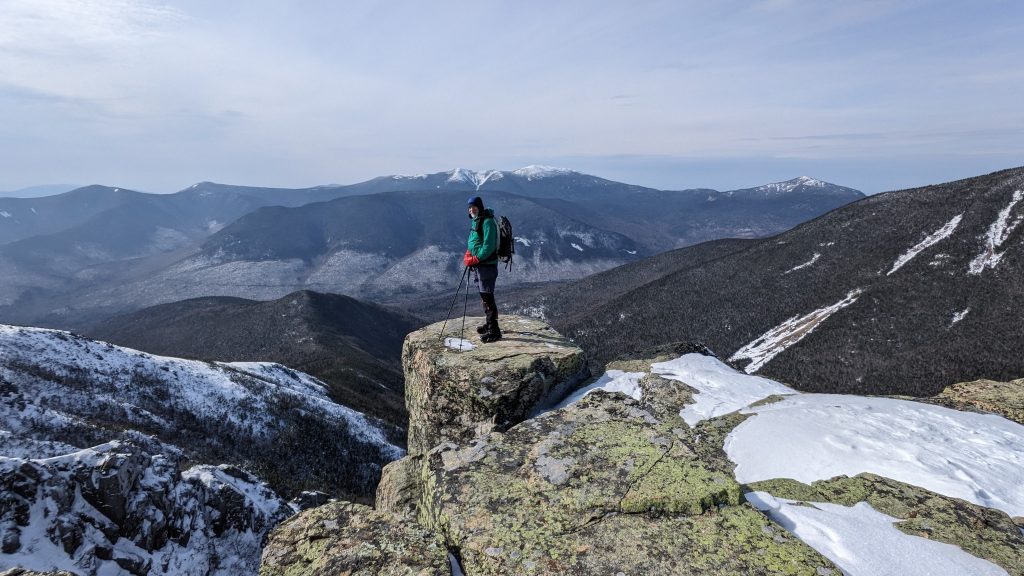
Starting in 2008
It took me about 16 years to finish my first round of the 48 tallest New Hampshire peaks (in any season). That stretched from the time I had kids in middle school who could be strong-armed into a hiking and camping weekend to last summer, when I had a grandchild almost old enough to bring (like the pint-sized hiker Little Foot, an accomplished seven-year-old we met on the trail many times).
I’m not sure I would have finished the first 48 if I hadn’t met John along the twisted path of life. He’s a gridder who has spent 10 years in the mountains, my secret weapon and personal guide. When the wind was strong from the west, I could count on his knowledge to guide us to east-facing trails and summits below treeline that made it bearable. He planned shorter hikes like Tecumseh to complement longer days like Isolation or Owl’s Head so I never felt burned out. We were fortunate to have a mild winter with just a few hikes that started near zero degrees, and just one scratch day for a high-wind storm on the summits.
Winter hiking isn’t all getting up before dawn and clomping uphill in snow. We had some laughs along the way. On Moosilauke on New Year’s Day, I was ahead of him when he stumbled, fell forward, and caught me around the knees for a clean take-down in front of dozens of people. For a moment, I knew what Tom Brady felt like when his offensive line failed him. On another hike—a trip up Pierce, Jackson, and Eisenhower on a biting cold day—John produced a couple of tiny butt sleds for us to careen down Crawford Path on. And he didn’t complain when I made the call to take a lousy route down from Tripyramids that required crossing Sabbaday Brook so many times that we gave up trying to keep dry and just waded through the cold water before squishing up the road, back to his van.
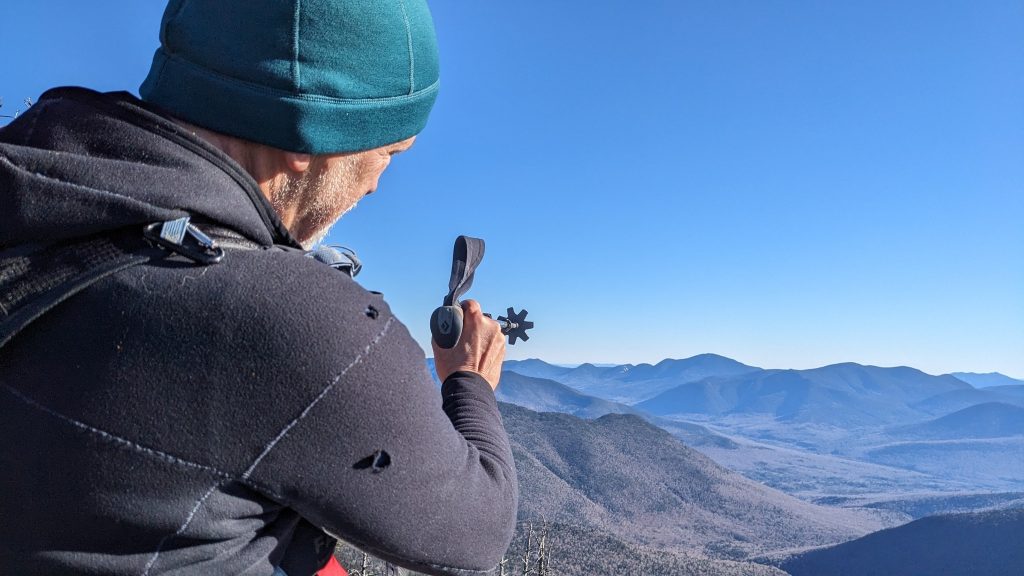
The Agony and the Ecstasy
Our biggest day this winter was the north-south Pemi, a series of peaks from Hale and Zealand in the north to Bondcliff in the south. I hadn’t done the route in five years but it was just as beautiful as I remembered. On that mild mid-February day, we had a gorgeous view of the east side of Franconia Ridge. That 24-mile, five-peak quest was hard, but I’d do it again tomorrow without hesitation.
The long hikes took a toll on my funky, buniony feet, however. I was in agony during the long slog from Bondcliff to my car at Lincoln Woods. It felt like I had stuffed my feet into boots that were much too small. The pain made me question my ability to hike for another month of weekends unless I could find relief somewhere. Buying new boots was a no-go because the break-in period would probably do more damage. On a desperate whim, I hobbled into a sporting goods consignment store in Franconia and found some used boots a size larger for the princely sum of $6. Against all odds, they fit well enough to get me through the next several weeks, including up Monroe, Washington, and Jefferson.
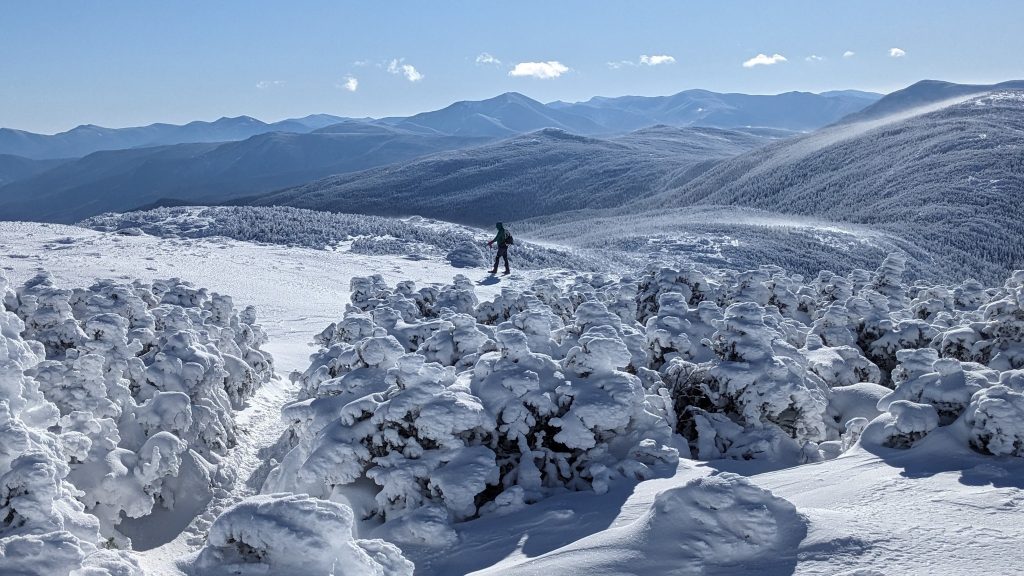
The Community
Wearing another hiker’s cast-off boots added to my appreciation of the New Hampshire hiking community, which felt smaller and warmer in winter when we were more likely to run into locals than tourists on the trails. We saw some of the same people repeatedly over the winter (and many more who recognized John), and even had a nice visit with Ed Hawkins, the Keeper of the Grid, in the Cog parking lot one afternoon. As usual, Ed was dispensing PBRs and high fives (unfortunately he told me he “doesn’t do interviews”—at least I asked). Maybe he’ll divulge his best stories some day if I bring the PBR.
The kindred spirits are sparse in winter but just as passionate about the trails. We saw many of John’s crew and made some new friends at The Notch Hostel’s Fireside Chats. The Woodstock institution hosts AT thru-hikers alongside AMC groups up from the city for the weekend. There, we enjoyed stories from the likes of Declain Kiley, who managed three single-season 48s in a single winter (puzzle over that one a minute, I’ll wait), and Will Robinson, who plugged on through a wet, lonely 60 days to do a continuous circuit of the 111 peaks from New York through Vermont, New Hampshire, and into Maine. FKT (fastest known time) record co-holder for the Winter 48 and storied NH48 hiker Philip Carcia (@FindingPhilip) is a host and producer of the series, which examines hiking from many perspectives. We even met new friends at various laundromats on Saturday nights when we limped in to dry our clothes for the next day’s adventure.
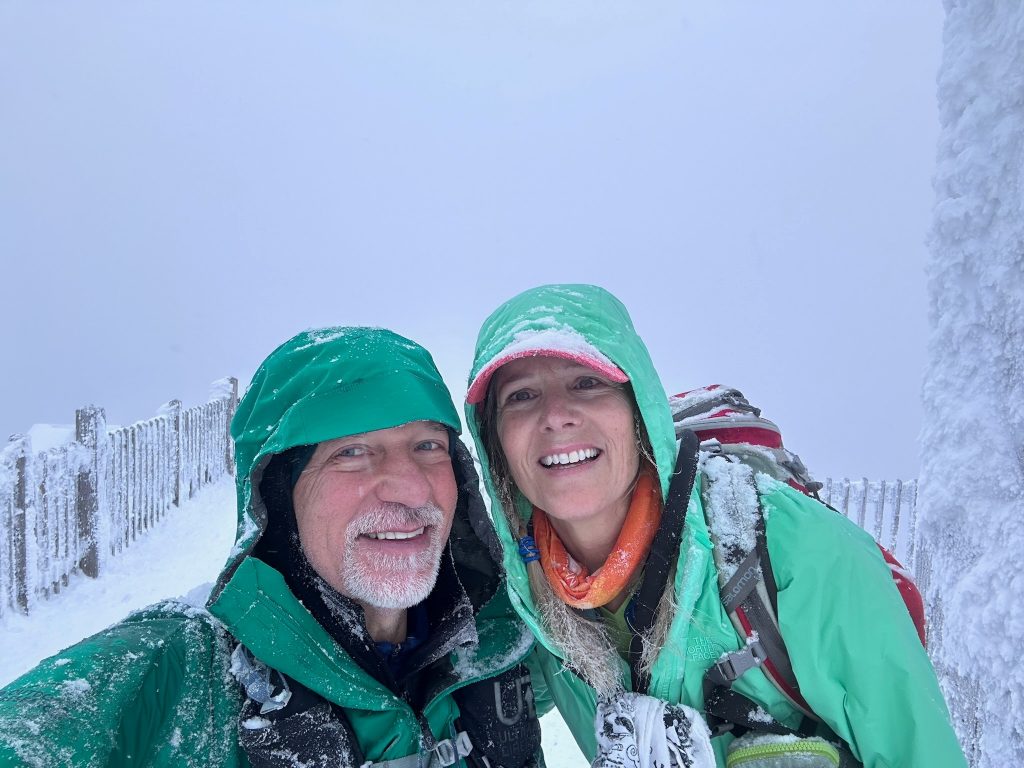
The Good, the Bad, and the Ugly
It doesn’t seem possible to do more than 230 miles and God knows how many vertical feet of hiking without learning a few things about oneself and about the challenges of winter ascents. I learned humility—doing a single season when you’re north of 55 years old isn’t all that impressive when you meet people who are gridding over 70 (that’s all 48 peaks in every month of the year, for 576 total). If you hike enough, you may meet them too.
Respecting the mountain weather and conditions on the ground is another important lesson. We were on the Carters during a moderate storm in January and had to break trail uphill in snowshoes. It was brutally humbling, and a lesson in energy management. The ridge between Middle Carter and North Carter was a series of giant hard-packed drifts we had to climb over. By the end of the day, the 12-mile route felt like 100 miles and I was wobbly on my feet. As we worked our way to the bottom of Imp Trail, I was blindly stumbling down drainages thinking I was following the trail. Without John’s knowledge of the area, it would have been easy to get into trouble, as so many people do.
On the good side, I realized that our style of carefully planned winter hiking doesn’t require tons of gear. Santa gave me some good Hillsound spikes for traction on ice and hard-packed snow, which are worth their weight in gold and my most often used piece of gear next to poles. Lightweight snowshoes, like my toothy Tubbs Flex, which mimic the traction (and have televators) of the more expensive MSRs, are indispensable.
Summit selfies show that I wore the same EMS Ascent hooded fleece and North Face lightweight shell week after week (my fleece had its 10th birthday this year too). These were my primary warm layers, but I always had a puffy stowed in my pack. Our double mittens (Outdoor Research) kept my always-cold hands comfortable most of the time, but we had to resort to red duct tape to hold the inner mitt together after too many miles of our poles wearing on the fabric. And our after-hike feasts sampled most of the delicious menu and pounds of french fries at Yaya’s in Twin Mountain.
Finally, I learned this winter that the Garmin InReach that I’ve paid $15 a month for without questioning its effectiveness actually works. One evening when we were planning a Sunday hike up Cannon Mountain (via Lonesome Lake), I tossed my pack in the back of the vehicle to make space. Soon, my phone was ringing. “Hello, this is Jonathan from Garmin. Are you having an emergency?” the voice asked. Huh? I never even turn on my Garmin. And I wasn’t having an emergency. But sure enough, when I opened the pouch holding the InReach device, the jostling had not only turned it on but was actively transmitting an SOS! Halfway across the country, Garmin operators responded within minutes and didn’t stop calling until I shut it off and securely locked the SOS button. Oops!
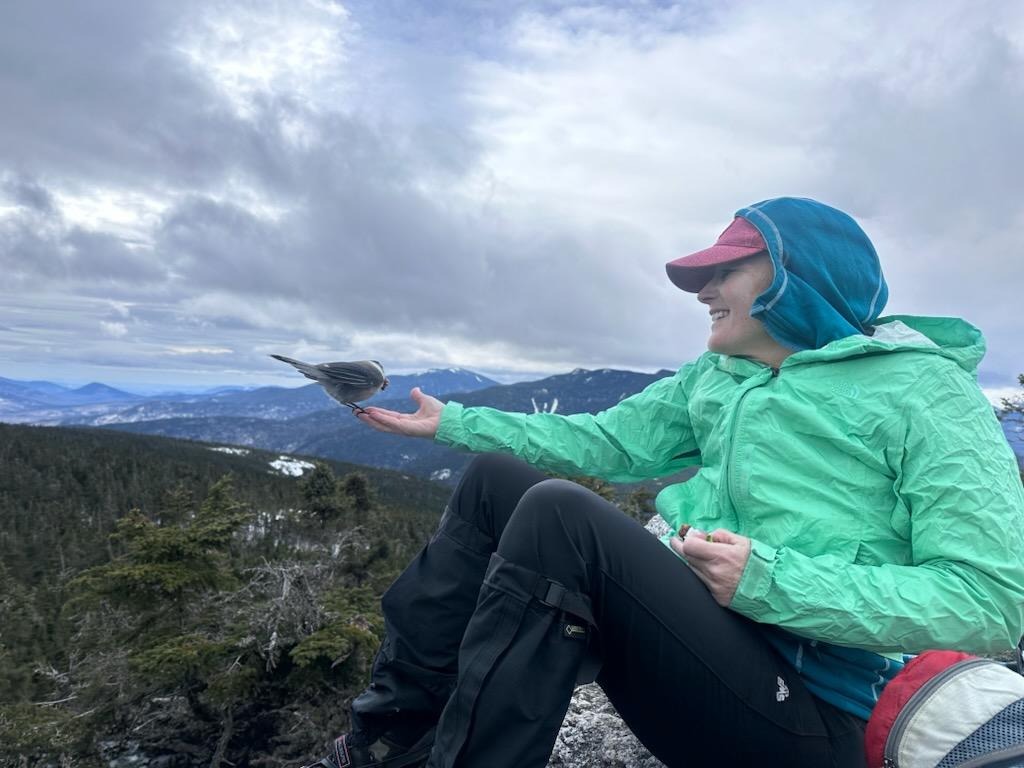
I doubt I’ll ever do another Winter 48 in my lifetime, but I’m so grateful that I had the opportunity, John’s patient guidance, and the good health to accomplish it. I didn’t leave a mark on the 230 miles of trail I covered, but the mountains have left a mark on me.
Alison O'Leary
Alison O’Leary is an avid cross country skier, author, and public speaker. See alisonoleary.com.
Related Posts
April 24, 2024
What to Bring When Road Tripping with Your Dog
Prepare for the ultimate road trip with…


